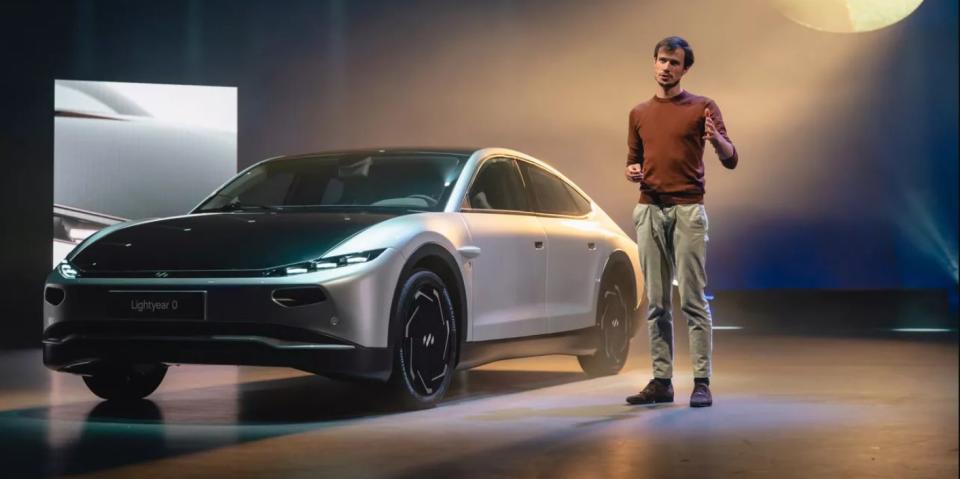Lightyear 0 Nears Production, but Who Is It For?

Dutch EV startup Lightyear secures $80 million in funding as Lightyear 0 approaches the start of production.
Lightyear 0 is expected to offer an average consumption of 141 Watt-hours per kilometer at 130 km/h (80.7 mph), which is about 4.4 miles/kWh.
The wind-cheating sedan is expected to arrive with a price tag of $265,000, making it a pricey testbed for a crossover the company plans to put into production in 2025.
Dutch EV startup Lightyear is about to begin production of its long-awaited sedan, engineered to take advantage of every last joule thanks to a very aerodynamic profile and solar body panels meant to deliver an extra kick. You may remember its prototype with the name Lightyear One from last winter, but as it heads into production the startup has renamed it Lightyear 0.
The company has just revealed it has raised €81 million, or $80 million, as it approaches the start of assembly, which will be performed by Valmet Automotive.
"These latest funds will ensure we keep momentum as we progress toward the production of Lightyear 0 later this year," the company said this week.
The innovative sedan features a relative small battery—just 60 kWh—but is designed to return an average consumption of 141 Watt-hours per kilometer at 130 km/h (80.7 mph), which is about 4.4 miles/kWh. This would give the sedan a range of 400 kilometers (248.5 miles) at that speed, which is well above what other EVs with batteries of this size can achieve, according to Lightyear. After all, 80 mph is not exactly the traditional sweet spot of EV efficiency.
It is also expected to be far more expensive than other EVs with a battery pack of its size, with a price tag of $265,000. The automaker plans to build just under a thousand examples, intended to be more of a technology demonstrator than anything else.
But its next planned EV, the Lightyear 2 compact crossover that will use many of the same technologies, is expected to be more of a mass-produced model.

 Yahoo Autos
Yahoo Autos 